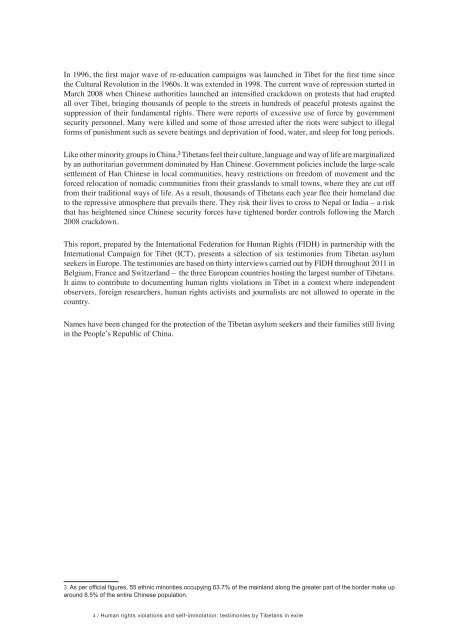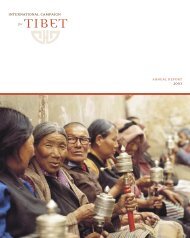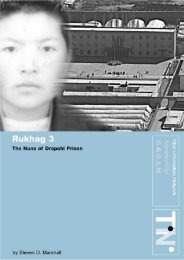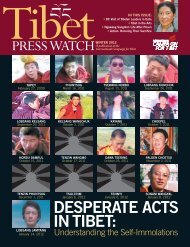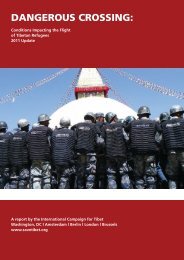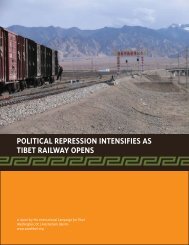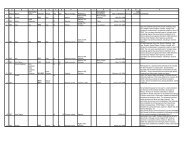to download PDF report. - Tibet Policy
to download PDF report. - Tibet Policy
to download PDF report. - Tibet Policy
You also want an ePaper? Increase the reach of your titles
YUMPU automatically turns print PDFs into web optimized ePapers that Google loves.
In 1996, the first major wave of re-education campaigns was launched in <strong>Tibet</strong> for the first time since<br />
the Cultural Revolution in the 1960s. It was extended in 1998. The current wave of repression started in<br />
March 2008 when Chinese authorities launched an intensified crackdown on protests that had erupted<br />
all over <strong>Tibet</strong>, bringing thousands of people <strong>to</strong> the streets in hundreds of peaceful protests against the<br />
suppression of their fundamental rights. There were <strong>report</strong>s of excessive use of force by government<br />
security personnel. Many were killed and some of those arrested after the riots were subject <strong>to</strong> illegal<br />
forms of punishment such as severe beatings and deprivation of food, water, and sleep for long periods.<br />
Like other minority groups in China, 3 <strong>Tibet</strong>ans feel their culture, language and way of life are marginalized<br />
by an authoritarian government dominated by Han Chinese. Government policies include the large-scale<br />
settlement of Han Chinese in local communities, heavy restrictions on freedom of movement and the<br />
forced relocation of nomadic communities from their grasslands <strong>to</strong> small <strong>to</strong>wns, where they are cut off<br />
from their traditional ways of life. As a result, thousands of <strong>Tibet</strong>ans each year flee their homeland due<br />
<strong>to</strong> the repressive atmosphere that prevails there. They risk their lives <strong>to</strong> cross <strong>to</strong> Nepal or India – a risk<br />
that has heightened since Chinese security forces have tightened border controls following the March<br />
2008 crackdown.<br />
This <strong>report</strong>, prepared by the International Federation for Human Rights (FIDH) in partnership with the<br />
International Campaign for <strong>Tibet</strong> (ICT), presents a selection of six testimonies from <strong>Tibet</strong>an asylum<br />
seekers in Europe. The testimonies are based on thirty interviews carried out by FIDH throughout 2011 in<br />
Belgium, France and Switzerland – the three European countries hosting the largest number of <strong>Tibet</strong>ans.<br />
It aims <strong>to</strong> contribute <strong>to</strong> documenting human rights violations in <strong>Tibet</strong> in a context where independent<br />
observers, foreign researchers, human rights activists and journalists are not allowed <strong>to</strong> operate in the<br />
country.<br />
Names have been changed for the protection of the <strong>Tibet</strong>an asylum seekers and their families still living<br />
in the People’s Republic of China.<br />
3. As per official figures, 55 ethnic minorities occupying 63.7% of the mainland along the greater part of the border make up<br />
around 8.5% of the entire Chinese population.<br />
4 / Human rights violations and self-immolation: testimonies by <strong>Tibet</strong>ans in exile


